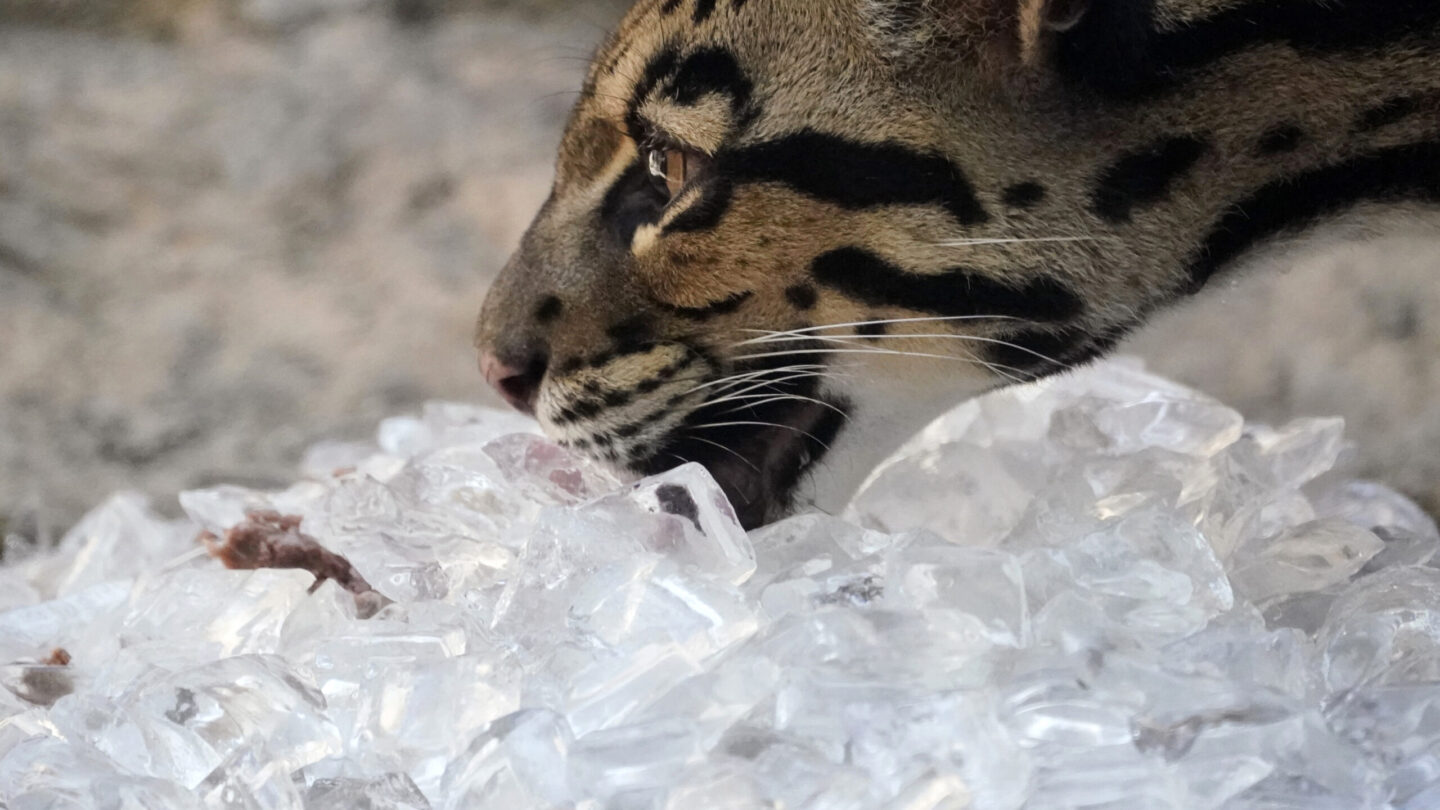As wide swaths of the U.S. deal with extreme heat this summer, zoos across the country are taking various steps to mitigate its impact on their animals.
“Days when it’s 99 degrees, it makes our job challenging for these animals that are used to living in cold environments to kind of keep them cool,” Pete Costello, assistant curator of Zoo New England’s Stone Zoo, told NPR.
The zoo is about 12 miles north of Boston, where record-breaking heat is scorching the city. Already on the second heat wave of the summer, Boston Mayor Michelle Wu declared a heat emergency earlier this week until Sunday.
Stone Zoo is trying to curb the effects of these dangerous temperatures, especially for animals used to the colder weather, such as snow leopards.
“What we do with the snow leopards in that situation is they have a holding building that’s built into the side of their exhibit, and that holding building is air conditioned,” Costello said.
Fans have been one of the easiest ways for the zoo’s reindeer, who are used to living closer to the Arctic Circle, to cool off, according to Costello.
Ice blocks and pools help animals keep cool
Pools have also helped some of the animals. Stone Zoo will refill the pool water each morning for the animals to ensure it’s at least 10-15 degrees colder than the water that was sitting there overnight. The zoo will also hose the animals down or mist them with water.
“We’ll just be dumping out the tubs and filling them with water, sometimes putting ice in it, all day for them,” he added.
Costello said ice is a quick way to cool the animals off. Seymour, the zoo’s jaguar, enjoyed a block of ice filled with meat inside earlier this week.
“You can just take a little bit of his diet, which is usually just a little bit of meat, and you freeze it in a five-gallon bucket overnight, and then in the morning, you just put it in his pool,” he said.
Stone Zoo also gives Seymour ice blocks that are sprinkled with some of his favorite scents — pumpkin pie spice is his favorite right now.
“So, you could … just take a regular bag of ice cubes, dump them on the ground and then put the pumpkin pie spice on it, and he will rub on it and stuff to kind of help him cool down,” he said.
The animals also have shelters, which are positioned with the sun in mind.
“The reindeer shelter is positioned in a way so when that strong afternoon sun hits it, that shelter is completely shaded,” Costello said.
The Smithsonian’s National Zoo in Washington, D.C., is also addressing the extreme heat on the animals.
“Most of the animals that can go outside are offered a choice year-round — to go outside or to stay in their indoor exhibit. Most indoor exhibits are cooled with AC in the summer and warmed with heat in the winter,” according to a statement from July 25.
The Smithsonian also said its giant pandas have air-conditioning and water-chilled grottos, and spend most of their hot days inside because their thick fur makes the heat unbearable.
The zoo also fills ice chunks with fruit inside for a cool summer treat.
“Many animals are offered fruitsicles as enrichment, which can be particularly refreshing this time of year,” the Smithsonian said.
“Fruitsicles are popsicles — they are usually diluted fruit juice frozen with cut-up chunks of fresh fruit in them. Gorillas, elephants and other bears enjoy these treats, too,” the statement added, explaining that the animals get these treats all year.
The zoo also said some of the animals can use their outdoor pools, such as Andean bears, pandas, lions, tigers and otters.
Copyright 2022 NPR. To see more, visit https://www.npr.org.
9(MDAxODM0MDY4MDEyMTY4NDA3MzI3YjkzMw004))

9(MDAxODM0MDY4MDEyMTY4NDA3MzI3YjkzMw004))








